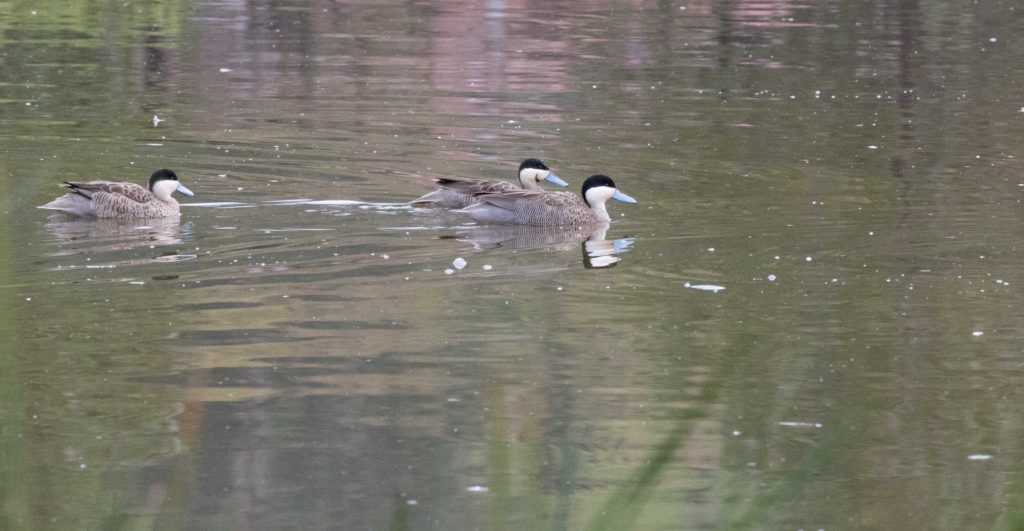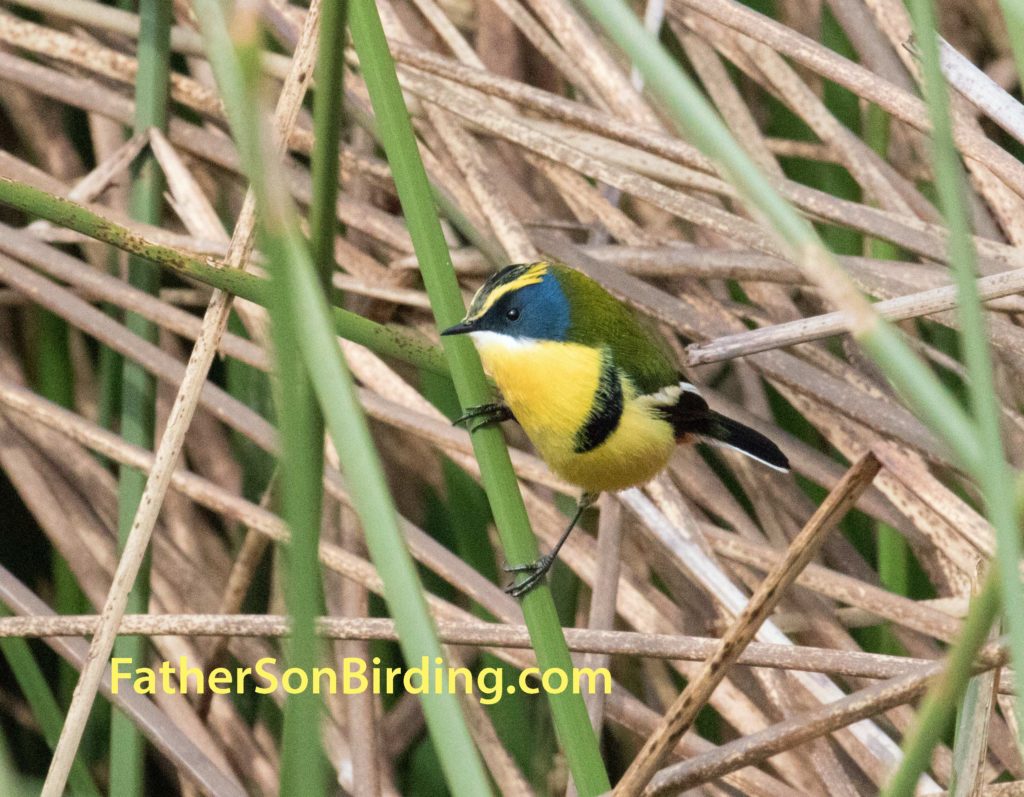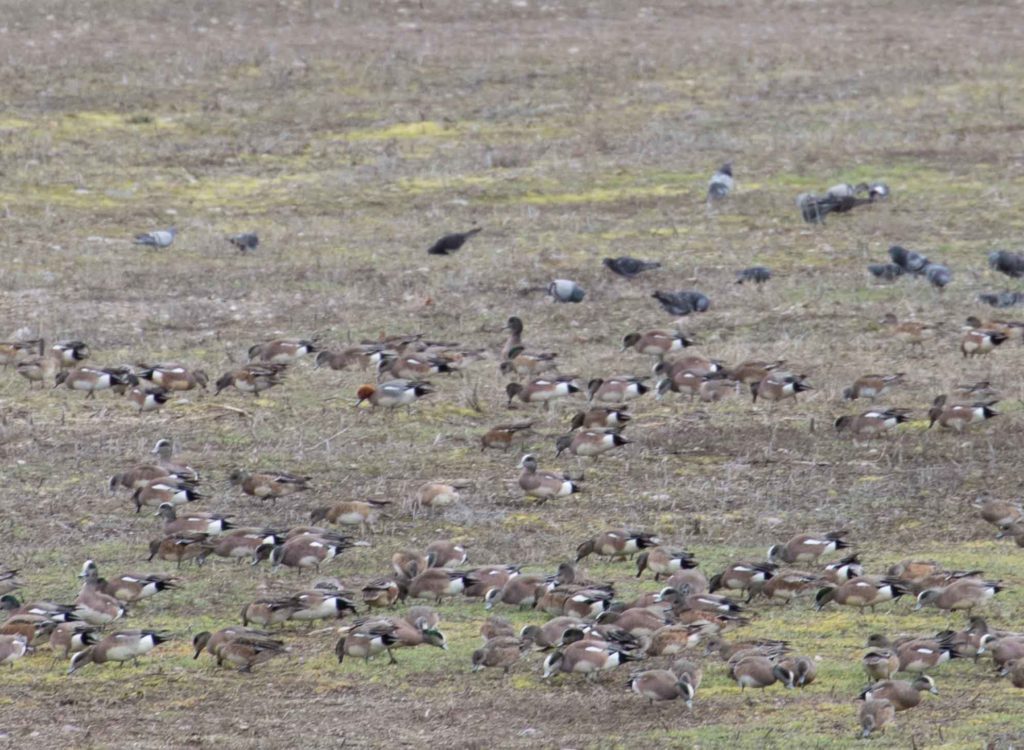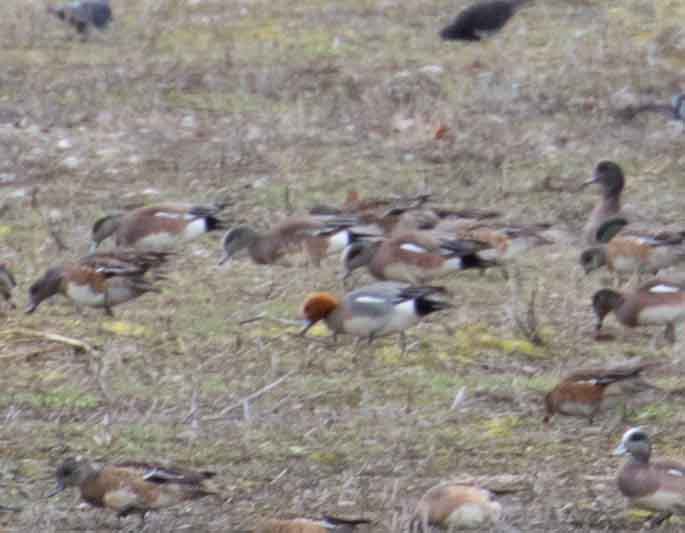Braden again.
We had been in Peru almost three weeks, and birding was on our minds. Okay sure, it had been on our minds the entire trip so far, but none of the things we’d done had been birding-oriented—we’d had a homestay in Cuzco, a weekend getaway to Pisac, a week journeying the Sacred

Probably the coolest ducks at Huarcapay, these Puna Teal glided effortlessly across the mountain lake. (Photo by Braden Collard)
Valley including Machu Picchu. Don’t get me wrong, we saw tons of great birds, including the national bird of Peru and quite possibly the most stunning bird in South America (see Post: “Washout at Machu Picchu”), but nothing on our schedule was designed to see birds. It just included them. So, as our time in Peru came to a close, we decided it was time to hire a guide and really see some birds.
At 5:30 a.m., we were picked up by our guide Juan Jose Salas Falcon and his stepfather from our hotel in Cuzco. We drove in the direction of the ruins of Sacsayhuaman (“Sexy Woman”), which we had visited about a week earlier. Our planned destination was Laguna de Huacarpay, which I had researched on ebird the night before. Thanks to recent lists, my dad and I had picked our target birds: Puna Ibis, Mountain Caracara, Aplomado Falcon, any kind of duck (only five species were common here) and the Many-colored Rush-Tyrant.

Just one of a trio we saw harassing a Variable Hawk, this Mountain Caracara was another Target Bird for the day. (Photo by Braden Collard)
We stopped at a few spots first to see some endemic landbirds (including the exotic-looking Chestnut-breasted Mountain-Finch) and get close to waterfowl, then arrived at the lake. At first glance, it resembled Lee Metcalf Wildlife Refuge, our local Montana go-to spot for waterfowl, but much, much bigger. Surrounding it were polluted neighborhoods, tall chain-link fences, and scrub-covered mountains.
We pulled to the side of the road shortly upon arriving and then trudged through the reeds to an observation tower where we got great looks at a solitary Chilean Flamingo feeding in the shallows. As we were heading back to the car, Juan Jose stopped us.
“Shhh! That rattle—it’s a rush-tyrant!”
We moved towards the sound, and I thought about what he had told us about this bird on the drive up. He said the locals had a story about how this bird had stolen all of the other tyrant’s colors. Suddenly, in response to Juan Jose’s playback, a small rainbow bird popped into view! The bird had a blue face, yellow body, green back and red rump—the entire rainbow displayed on one bird. It reminded me of the Common Yellowthroats we had back home: skulkers, but beautiful. Success! The day following this great sighting was amazing; we got every single target bird, along with more endemics and surprises we could wish for.

This Many-colored Rush-Tyrant was just one of the birds that made our day. (Photo by Braden Collard)


